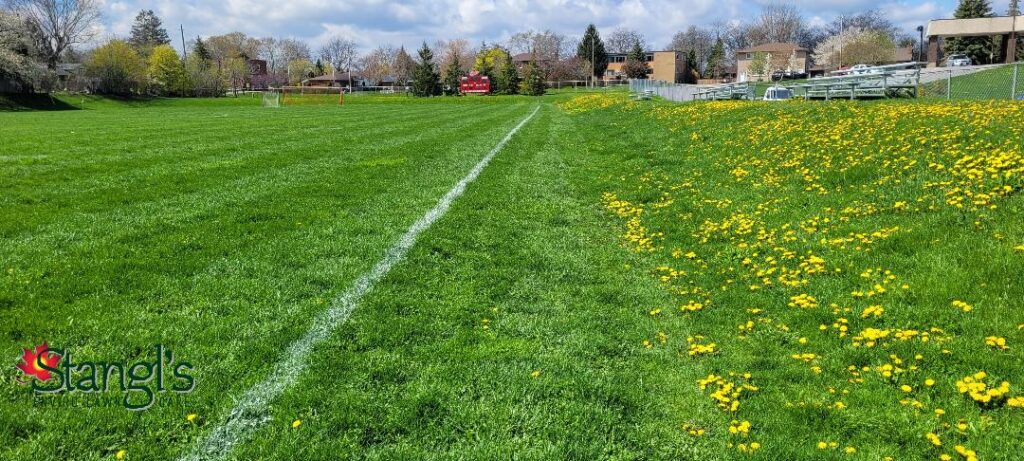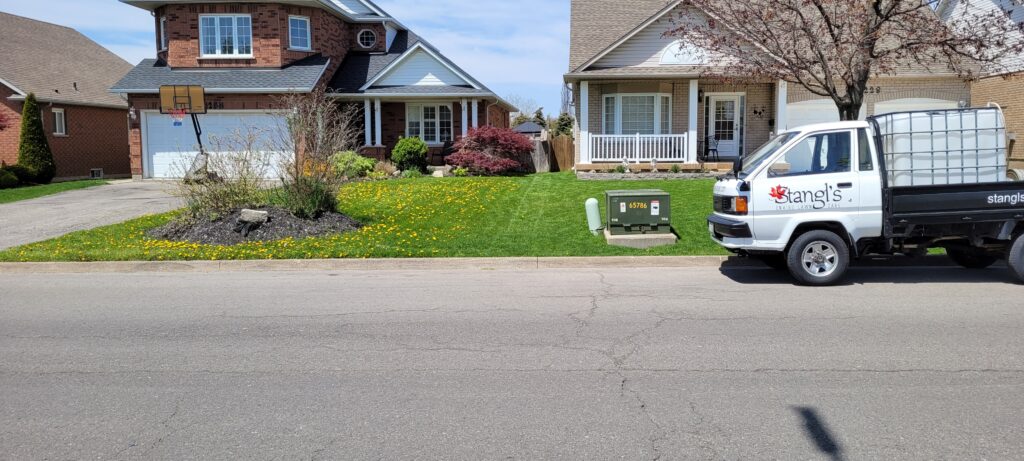Introduction: In the pursuit of the perfect lawn, many homeowners wage war against dandelions, viewing them as unwanted invaders. However, a deeper understanding of these resilient plants reveals their vital role in soil health and ecosystem balance. At Stangl’s Enviro Lawn Care, we embrace a holistic approach to lawn management that prioritizes soil health, biodiversity, and sustainability.
The Role of Dandelions: Contrary to popular belief, dandelions are not simply nuisances to be eradicated. Their deep taproots penetrate hard-packed soil, aerating the earth and reducing erosion. Additionally, dandelions act as nature’s fertilizer, extracting nutrients such as calcium and phosphorus from deep within the soil and making them available to other plants. By fostering the growth of dandelions, we contribute to a healthier soil ecosystem that supports vibrant plant life.

Understanding Soil Biology: Healthy soil is the foundation of a thriving lawn, and dandelions play a crucial role in soil biology. These plants form symbiotic relationships with mycorrhizal fungi, which help control weed growth and enhance nutrient uptake in established lawns. By nurturing soil biodiversity and promoting mycorrhizal associations, we can create resilient ecosystems that are less susceptible to weed infestations.
The Limitations of Conventional Lawn Care: Traditional lawn care programs often rely on outdated science from the mid-1800s, perpetuating the use of synthetic fertilizers and pesticides that harm soil health and contribute to environmental degradation. This approach fails to recognize the interconnectedness of soil biology, plant health, and ecosystem dynamics, leading to unsustainable outcomes.
The Path to Regenerative Lawn Care: At Stangl’s Enviro Lawn Care, we’re pioneering a new paradigm in lawn management that prioritizes soil health and sustainability. Our Safe Lawn Process focuses on restoring soil health through innovative techniques such as our exclusive Nature’s Brew solution. By harnessing the power of natural ingredients and promoting mycorrhizal associations, we create healthy, resilient lawns without the need for harmful chemicals.
Conclusion: Dandelions are not enemies to be vanquished but rather allies in the quest for a healthy, balanced lawn. By embracing a holistic approach to lawn care that prioritizes soil health, biodiversity, and sustainability, we can create vibrant landscapes that benefit both people and the planet. Join us in reimagining lawn care as a regenerative practice that fosters harmony with nature.
